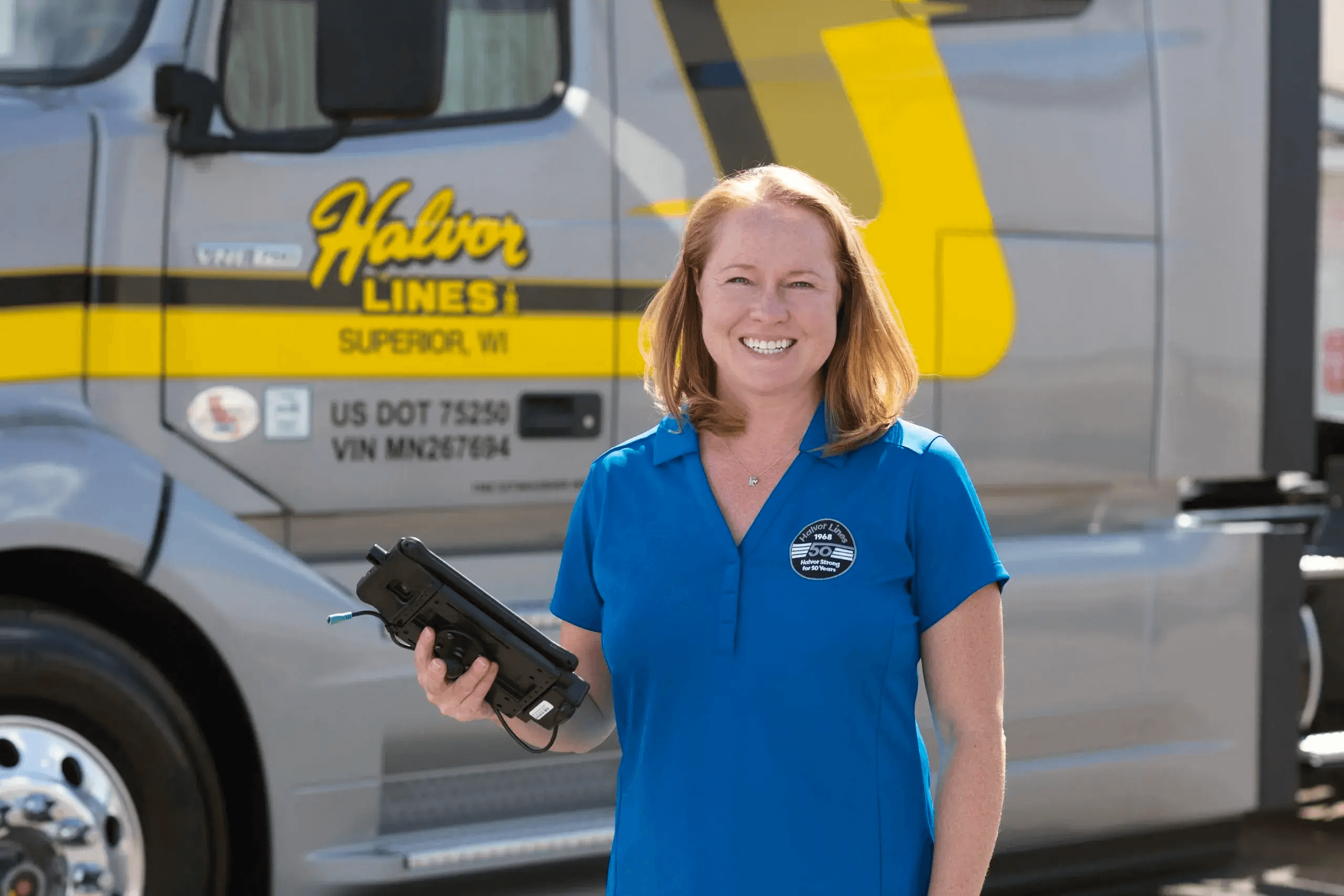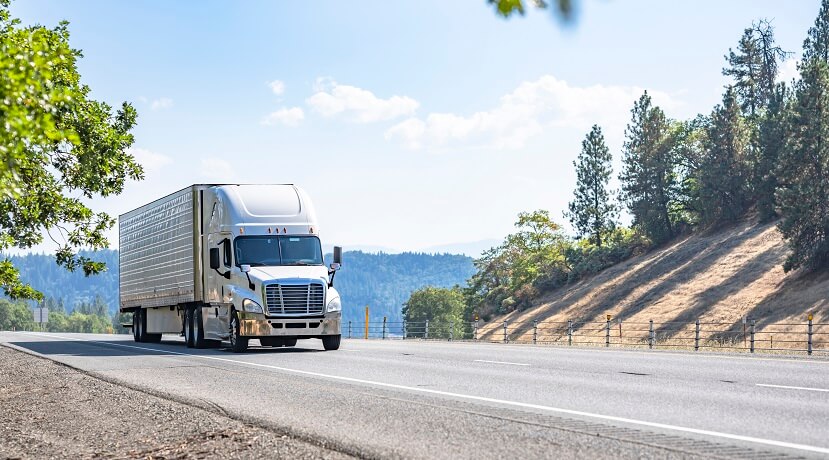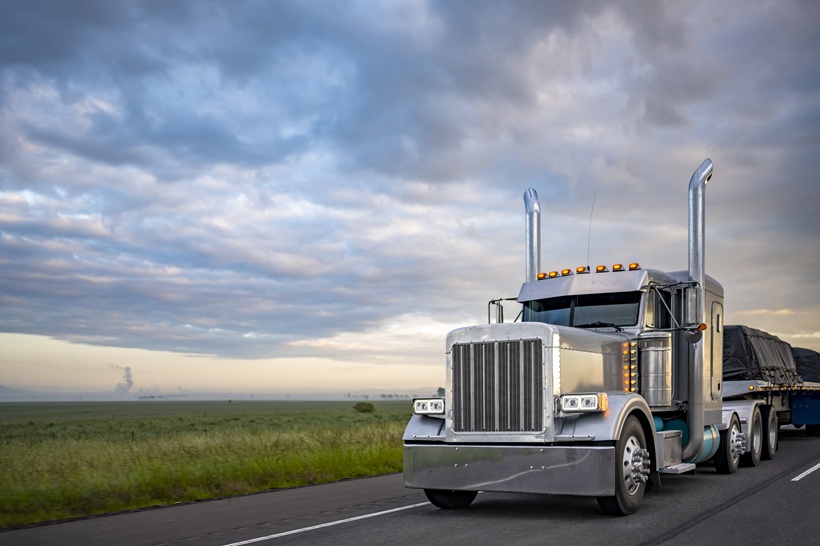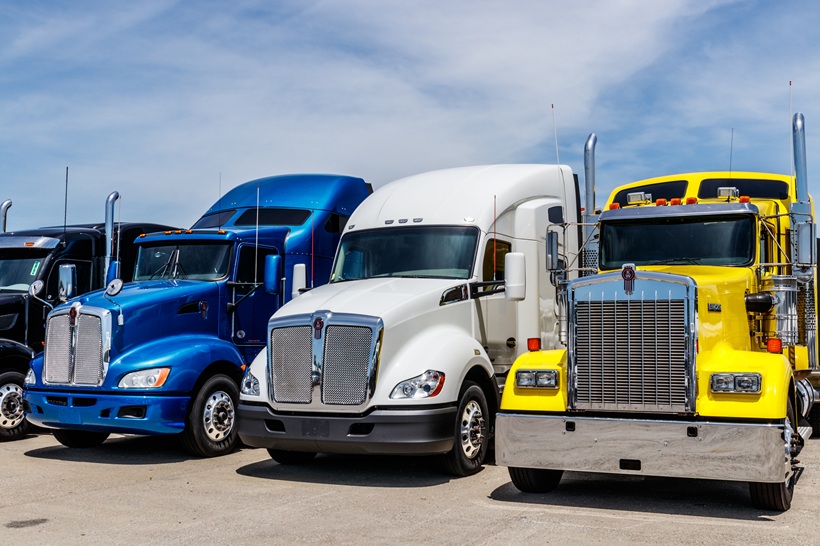
Whitepaper: Clearing a Path Towards Fully Digital Freight Transactions
A fully digital, end-to-end freight transaction is the holy grail for the transportation and logistics industry. Only recently has it become attainable, on a large scale, for companies of all sizes.
To arrive at this moment, shippers, third-party logistics (3PL) providers and motor carriers have quickly been migrating to new platforms for conducting freight transactions that have capabilities that exceed traditional methods such as electronic data interchange (EDI).
Cloud-based platforms are now using real-time integrations with transportation management software (TMS) systems to power advanced functions that include capacity procurement, real-time shipment tracking, and exchanging electronic documents.
Some modern connectivity platforms have already cleared the final digital hurdle by eliminating paper shipping documents for zero-touch freight transactions.
The latest digital innovations that have emerged during the worldwide COVID-19 pandemic give shippers and transportation providers an effective way to safeguard drivers and essential supply chain workers, and an efficient way to boost cash flow.
An electronic bill of lading (eBOL) and electronic proof-of-delivery (ePOD) are two of the applications that have recently converged mobile and back-office technologies onto a single transportation and logistics platform to make freight transactions seamless for all parties.
Going paperless, at last
Prior to the coronavirus pandemic, paper shipping documents were an inconvenience for drivers and office staff before they suddenly became a health hazard.
Drivers had to pick up paper BOLs from shippers and hand them over to receivers to sign in close proximity. Only when drivers completed a delivery could they rid themselves of paperwork by using truck stop scanning or mobile applications to capture and transmit the signed POD documents to the office.
With the latest digital innovations, paper and digital documents are now moving through a secure cloud platform that presents an eBOL and ePOD to the appropriate party at the right time and location within a configurable digital workflow solution.
The four essential components in a platform that can deliver fully digital, zero-touch freight transactions to shippers and transportation providers of all sizes are explained below:
1. The electronic BOL
Shippers traditionally have printed BOLs to accompany their loads. Many also send BOLs to carriers electronically with EDI (a “211” transaction) or by email — typically as a PDF attachment.
During the COVID-19 crisis, more shippers have been choosing the latter option to eliminate paper shipping documents altogether. New options have emerged for shippers to send BOLs directly to a cloud-based platform that is already connected to the transportation management systems (TMS) of carriers and logistics providers.
When BOLs enter the platform, they are indexed to the correct orders in carrier TMS systems and sent to the driver assigned to each load via a connected mobile app. The app can then notify the driver an eBOL has been received and is ready to use prior to arriving to make the pickup.
If a shipper does not send the eBOL in advance, drivers can use the same mobile app to capture and transmit an image of the paper BOL the moment they receive it from the shipper. The document is automatically indexed by the cloud platform and associated with the shipper, receiver, carrier and driver accounts for all parties to have access.
2. Electronic POD
When a driver arrives at a delivery location, the mobile app lets the driver enter the email or phone number of the signee to receive the eBOL for the load and to complete an ePOD process.
The signee who receives the eBOL can type or scrawl his or her name in the signature box using a keypad, mouse or finger.
When a signature is captured, the platform can use location data from the app and the integration it has with the carrier’s TMS to validate the delivery is completed. At this point the signee receives a confirmation email and drivers get an instant confirmation through the app to be cleared for departure.
The ePOD process can be automated by a cloud platform extracting the receiver’s address from the eBOL or from the order in a carrier’s TMS. When the driver arrives and crosses a geofence at the location, the platform sends the ePOD to the email or phone number of the receiver on file to capture a signature.
A geofencing feature can also be used to get the mobile app to present the driver with a custom, location-specific form for each shipper or receiver. The forms can walk the driver through specific processes for checking in when arriving for a pickup or delivery, for example.
3. Exception management
Since freight transactions take place in the real world, and not on a whiteboard, they rarely go exactly according to plan. When a driver makes a delivery, for example, the receiver or driver may notice damaged or spoiled freight or need to annotate an eBOL for a detention event.
Just as with a paper document, the driver or receiver can annotate fields in the eBOL as well as attach a picture to record an exception. Additionally, the arrival and departure times can be automatically recorded by the mobile app onto the eBOL for the shipper or receiver to sign off on a detention event.
Once the ePOD is completed, the information and documents can be processed in the cloud using optical character recognition (OCR) and machine learning technology to validate document types, extract data, identify exceptions and correct errors.
After processing the documents midstream, the cloud platform sends the ePOD document and data directly to the back-office system of a transportation provider for error-free payroll, billing and other steps to complete the freight transaction.
4. Expanding the footprint
One of the most important considerations for any shipper, carrier or 3PL for zero-touch freight transactions is to choose a platform that can be scaled to all parties.
Choosing a platform that is already connected to a mobile app used by drivers and connected to the TMS and mobile fleet management systems of carriers can expedite that process.
The opportunities for shippers and 3PLs to instantly connect with motor carriers for capacity procurement, shipment tracking and a zero-touch ePOD processes have been expanding since the electronic logging device (ELD) mandate increased competition for fleet mobility solutions and served as a catalyst for digital innovation.
Carriers have had to re-evaluate their mobile strategies when new solutions emerged to improve business efficiency and the work experience of drivers. Many fleets are now using a mobile app with eBOL and ePOD tools, truck-specific navigation, weigh station bypass, load permits, fuel prices and many other driver-friendly functions.
The same app can also be connected to a fleet management platform for telematics and ELD functions. Mobile apps that already have a large industry footprint are much easier for shippers, fleets and 3PLs to use for seamless freight transactions.
A fleet with a logistics division, for example, can quickly roll out a zero-touch process with its own drivers and deploy the same solution in its logistics division to owner-operators and carriers who may already be using the same app for document capture.
The nexus of POD technology
Connectivity is expanding while technology is converging. At the nexus of these forces in the transportation and logistics industry is Transflo, the largest supplier of POD solutions for carriers, freight brokers and drivers.
Transflo recently developed a flexible eBOL and ePOD process and expanded its reach to shippers. Because no shipper or receiver uses the same shipping documents and has different information needs, Transflo gathers individual requirements and creates location-specific forms and driver workflows.
The custom forms work with the eBOL and ePOD tool as part of an integration solution with the Transflo Mobile+ app.
One of the early adopters of an integrated eBOL and ePOD solution is KBX Logistics. As an independent Koch Industries company, KBX plans to move from a nearly 100 percent manual bills of lading process to an electronic bill of lading solution for transactions and storage.
The majority of KBX Logistics carrier partners already use Transflo tools and will have immediate access to the new paperless solutions which can also be integrated with the systems of those not currently on the Transflo platform.
Shippers affiliated with KBX Logistics, such as Georgia-Pacific, can now provide necessary documents to drivers electronically as well as use document scanning through the Transflo Mobile+ app.
The app is part of an expanded, cloud-based Transflo Mobile+ suite that includes freight visibility, truck navigation, image optimization and digital workflow management tools. The suite also incorporates telematics and compliance data from the Transflo T-Series ELD connected to the vehicle and to the Transflo Mobile+ app on driver’s mobile devices.
More than 1.6 million drivers use the Transflo Mobile+ app and Transflo’s truck stop scanning network at more than 3,000 locations in North America for real-time POD image capture and transmission. Collectively, the Transflo platform digitizes over 800 million shipping documents a year that represent approximately $84 billion in freight bills.
For a seamless freight transaction, shippers and 3PLs can also utilize the API integrations Transflo has with freight visibility platforms to automatically exchange load tracking information.

Halvor Lines creates its own eBOL using a flexible mobile platform
When states began to issue lockdown orders in March to contain the spread of COVID-19, Halvor Lines’ Chief Information Officer Bonnie Ramsay began thinking of a technology solution to safeguard drivers.
Halvor Lines is based in Superior, Wis., and has flatbed, dry van, refrigerated and deck van operations. Ramsay immediately contacted several of the company’s technology partners, including Transflo, to assist in developing a custom application that would enable drivers to remotely capture signatures from receivers on proof-of-delivery (POD) documents.
Halvor Lines was already using the Transflo Mobile+ app on company tablets to capture and transmit images of POD documents to the office after a delivery. The mobile app is also connected to the company’s Transflo T-Series ELD mobile fleet management platform.
After several weeks of development and testing, Halvor Lines rolled out its own eBOL solution fleetwide on July 2.
Drivers are using the eBOL tool to capture images of paper documents as soon as they receive them after picking up loads. The images are immediately sent to the company’s document management system to generate a PDF file that is linked to a cloud-based electronic signature application.
The e-signature app sends the eBOL to the signee at the receiver as soon as drivers enter the person’s phone number or email address into a custom web form in the Transflo Mobile+ app.
At each delivery stop the app gives drivers instant visibility of the status of the eBOL. Once signed, the driver is cleared to leave.
The main reason for the eBOL is to safeguard drivers, but Halvor Lines has also gained efficiencies by getting signed eBOLs into its back-office systems for billing as soon as drivers complete deliveries.
“If just one driver does not get sick because of utilizing this new tool, I have done my job. I care for them so much and am so concerned for them out there right now,” Ramsay said.



